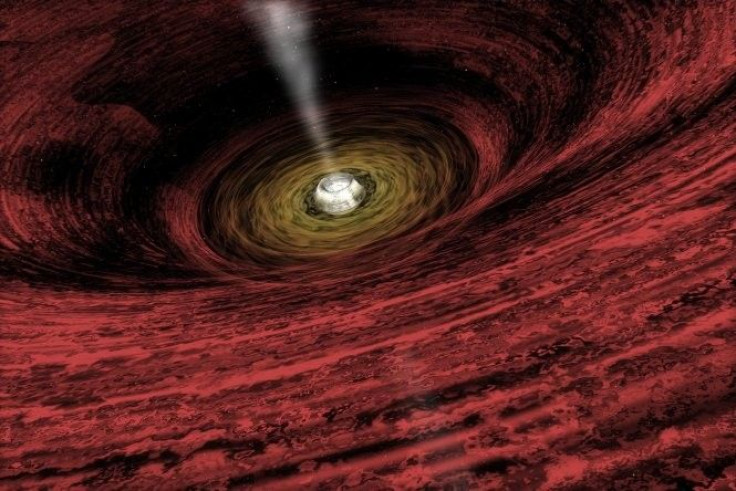Giant Black Hole Devours a Star, Flashes Bright Gamma-Ray Burst

A powerful burst of gamma rays first detected by NASA in late March this year may have been due to a Sun-sized star falling into the massive black hole and being ripped apart, which is believed to occur only once every 100 million years.
The massive star was ripped apart, shredded into pieces as the giant black hole devoured it, unleashing some of the most powerful gamma ray flashes astronomers have ever seen.
On March 28 this year, NASA's Swift satellite, which is trolling the universe for gamma ray bursts, detected the intensely bright flash in the constellation Draco. Astronomers initially thought it was a powerful burst of gamma rays from a collapsing star, one of the most powerful types of explosions in the universe, which usually die away within minutes.
But the tremendous amount of energy could still be seen months later, they realized that it wasn't a typical gamma-ray burst at all.
With the help of space-borne and ground-based telescopes, scientists eventually agreed that the explosions were generated by the star sucked by a black hole with producing high radioactive emissions.
Scientists said that the cosmic event is still visible as of this week, while the previously plotted black hole has been tagged as inactive prior to the event. Astronomers said its normal functions of swirling and scooping up objects within its path and sight could never be discounted.
The astronomers suspect that the gamma-ray emissions began on March 24 or 25, at a distance of about 3.8 billion light-years away from Earth.
“This is truly different from any explosive event we have seen before. This is truly different from any explosive event we have seen before,” said Joshua Bloom of the University of California-Berkeley, a co-author of research on the blast published in the journal Science, reported Reuters.
We have this otherwise dormant black hole, not gobbling up an appreciable amount of mass, and along comes this star which just happens to be on some orbit which puts it close to the black hole, Bloom said.
A black hole is a region of space from which nothing, not even light, can escape. The theory of general relativity predicts that a sufficiently compact mass will deform spacetime to form a black hole.
There are three main types of black holes:
The first types are the Stellar black holes which have a mass of about 5 to 100 Suns formed at the end of very massive stars' evolutionary cycle.When a star runs out of nuclear fuel, it will collapse.
The second types are mid-mass black holes which are a newly discovered type of black hole that has a mass of 500 - 1,000's of Suns. This is much more massive than known stellar black holes, and much smaller than supermassive black holes, so it is called a mid-mass black hole.
The third types are supermassive black holes which have a mass of a million or more Suns located in the centers of galaxies. It is not known whether they formed in the initial collapse of the gas cloud that formed the galaxy, or from the gradual growth of a stellar mass black hole, or from the merger of a centrally located cluster of black holes, or by some other mechanism. Almost all galaxies, including the Milky Way, are believed to own supermassive black holes at their centers.
© Copyright IBTimes 2024. All rights reserved.











